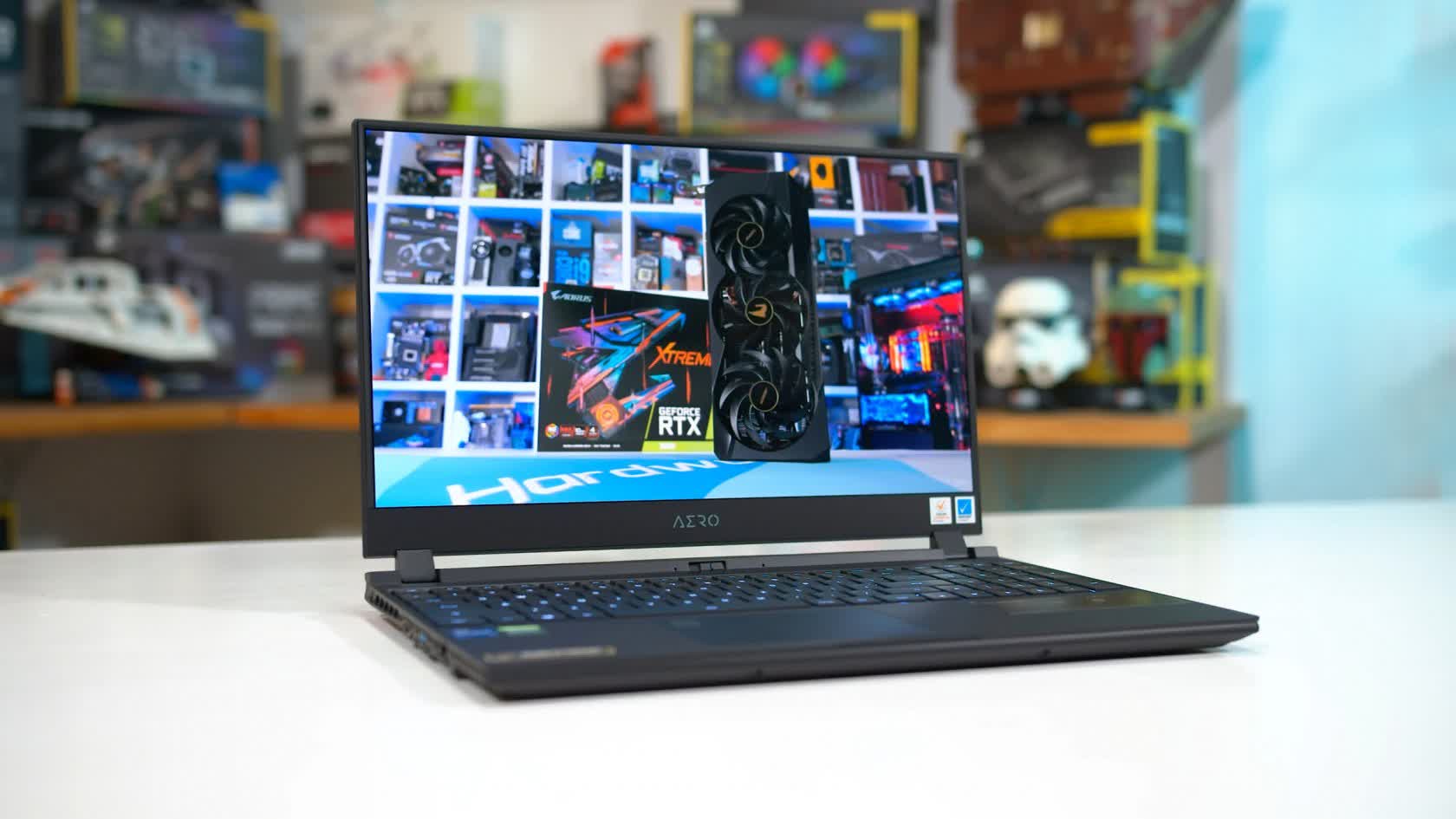The Core i7-11800H is a substantial upgrade for Intel, bringing Tiger Lake designs up to 8 cores, suitable for gaming and mobile workstation systems which compete against AMD's Ryzen 5000 line-up.
You are using an out of date browser. It may not display this or other websites correctly.
You should upgrade or use an alternative browser.
You should upgrade or use an alternative browser.
Intel Core i7-11800H Review: 11th-gen Tiger Lake H45 Put to the Test
- Thread starter Scorpus
- Start date
The higher power consumption to reach higher clockspeed tend to be the undoing of Intel chips in the mobile space. A lot of laptops tend to come with bare minimal cooling solution, which will struggle to keep the chip running at a high boost rate since the cooling solution need to also account for the heat from the GPU too.
Irata
Posts: 2,290 +4,004
As always, a very good review. The only thing I‘m missing is actual power draw numbers (e.g. at the wall).
One comment:
Is this something that should be considered a plus for a laptop CPU though ? I‘d personally prefer if it were more efficient at utilizing low levels of power for this form factor.
One comment:
Intel’s new Tiger Lake design built on 10nm SuperFin is much more efficient at utilizing high levels of power
Is this something that should be considered a plus for a laptop CPU though ? I‘d personally prefer if it were more efficient at utilizing low levels of power for this form factor.
gigantor21
Posts: 401 +804
So Intel can finally hang with AMD in the laptop space again, for the most part, but Intel kit with equivalent specs are more expensive while AMD machines are harder to find.
Lovely.
Lovely.
The power consumption figures from the wall is going to be dependent on a number of variables, some of which aren't going to be easily controllable. For example, the efficiency of the charging unit, the LCD/OLED panel used in the screen, and the number of additional devices on the laptop's motherboard will contribute a small, but non-trivial, amount to that power usage. Thus making less easy to narrow it down to just CPU vs CPU.As always, a very good review. The only thing I‘m missing is actual power draw numbers (e.g. at the wall).
Irata
Posts: 2,290 +4,004
Thanks. It would still be great to be able to get an indication of what CPU but also GPU actually consume. If you can use software for that it‘s nice, but checking from the wall would be a good way to confirm if these numbers are accurate.The power consumption figures from the wall is going to be dependent on a number of variables, some of which aren't going to be easily controllable. For example, the efficiency of the charging unit, the LCD/OLED panel used in the screen, and the number of additional devices on the laptop's motherboard will contribute a small, but non-trivial, amount to that power usage. Thus making less easy to narrow it down to just CPU vs CPU.
Irata
Posts: 2,290 +4,004
Speaking of power: do you know how much Tiger Lake‘s chipset consumes ? I assume its power consumption is not included in the CPU‘s TDP.The power consumption figures from the wall is going to be dependent on a number of variables, some of which aren't going to be easily controllable. For example, the efficiency of the charging unit, the LCD/OLED panel used in the screen, and the number of additional devices on the laptop's motherboard will contribute a small, but non-trivial, amount to that power usage. Thus making less easy to narrow it down to just CPU vs CPU.
I wonder if I made a mistake buying ASUS TUF A15 when I actually wanted TUF F15 but the last gen Comet Lake one only had GTX 1650 and Comet Lake vs A15's 5800H and RTX 3060. I should have waited for TUF F15 11th gen which has RTX 3060 and 11800H. Would have gotten Thunderbolt 4 to network with my other Intel laptop with Thunderbolt 3/9750H at 10 Gigabit Ethernet speeds.
Oh well maybe Intel 11th gen F15 laptop will be priced higher. Then I will feel better for losing out on Thunderbolt 4 and PCIe Gen 4 when Intel has almost caught up with AMD.
Oh well maybe Intel 11th gen F15 laptop will be priced higher. Then I will feel better for losing out on Thunderbolt 4 and PCIe Gen 4 when Intel has almost caught up with AMD.
Last edited:
They should have tested it all the way down to 10W to see how well they stack up with Apple M1. If it scales well at lower power levels would make for a nice Ultrabook cpu (yes im aware of intels 15w cpus but they only have 4 cores)
Similar threads
- Replies
- 29
- Views
- 955
- Replies
- 21
- Views
- 1K
Latest posts
-
Samsung delays $37B Texas chip plant with no customers in sight
- zamroni111 replied
-
TSMC shifts focus to US, postpones new chip plant in Japan
- Kashim replied
-
TechSpot is dedicated to computer enthusiasts and power users.
Ask a question and give support.
Join the community here, it only takes a minute.
